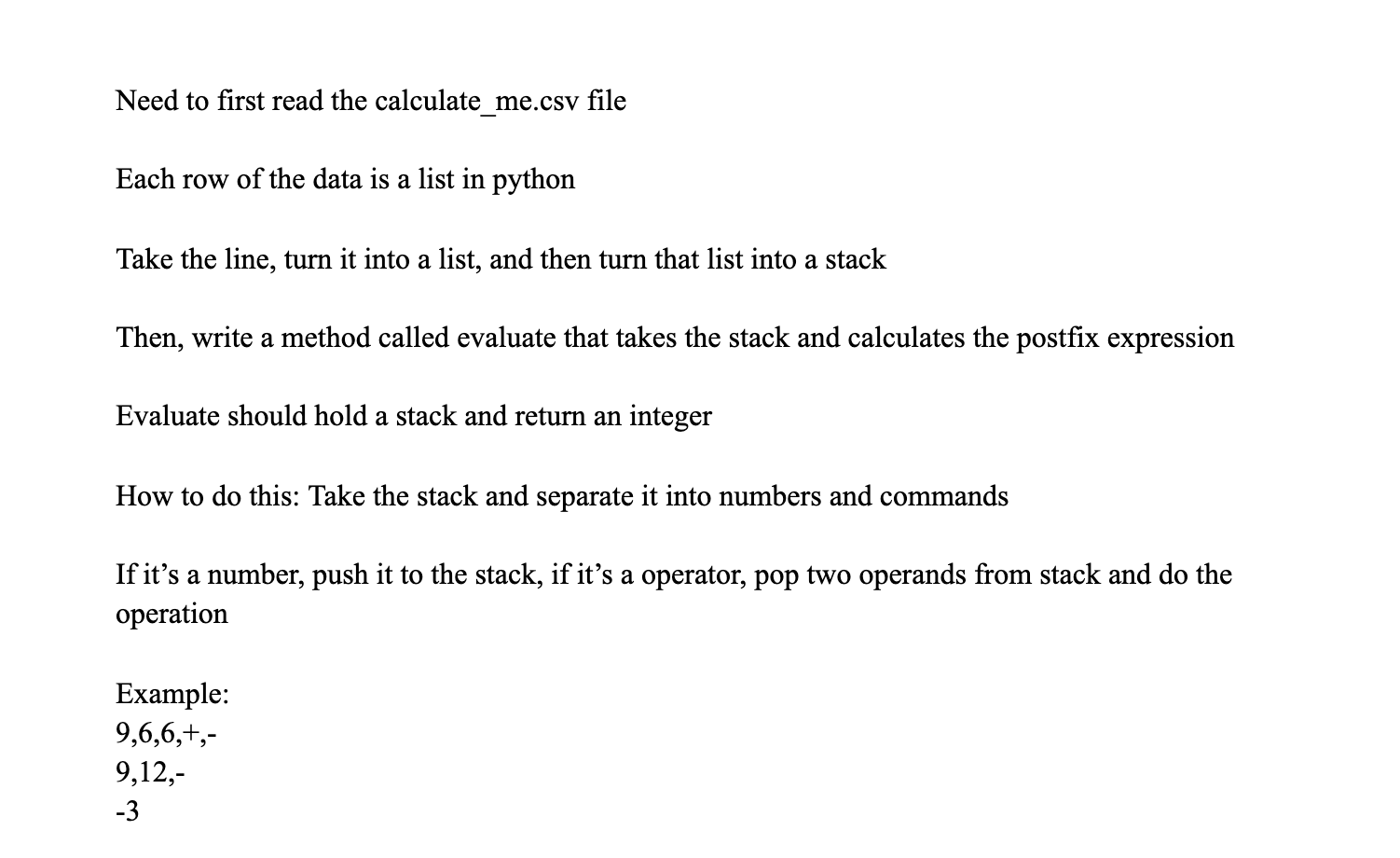Calculations
The calculations for this lab are, in the order they were in: [6,40,-162,-692,2,-19,93,95,-11,49000,38,84,-100,115,3,142,791,82,-192,-4,143,3060,137,384,11,48,805,11,-2700,190,-96,1715,60,48,-25,-4,-135,-77,663,40,10,-81,-15,-311,1095,1076,1260,-204,91,416,-26,34,-19,-343,11,-110,192,-63,-2,9,13,-33,-223,152,75,54,517,2110,412,10,-571,3432,23,-48,1764,7,240,-2,-936,9,1,5,414,386,128,-115,1,-18,0,-16186,1391,29,233,38,63,1560,591,-36,917,-25]. The number that I got that was the average was 529.91.
Stack in Postfix Notation
The way I visualized the stack in PostFix Notation was:
- Look at each character in the row
- If the character is an integer, append it to the stack
- Assign two of the numbers that are popped
- If there is an operator, take those two numbers and do the operation, and append it to the stack
- Return the top element from the stack
How I did the lab
First, I tried to create the evaluate function. I used Google Docs to try and write down everything that came to mind, even if it was wrong.  . This was pretty much my basis for the lab, and it worked out fine. I was able to create my evaluate function nicely, but a major error was that I had a List disguised as a Stack. The error that I got was that I couldn’t convert from a Stack to a string, so instead of using Stack, I used a List. I could have done better by using an actual Stack class. What I learned from this lab was using a Stack class in order to apply it to Postfix Expressions.
. This was pretty much my basis for the lab, and it worked out fine. I was able to create my evaluate function nicely, but a major error was that I had a List disguised as a Stack. The error that I got was that I couldn’t convert from a Stack to a string, so instead of using Stack, I used a List. I could have done better by using an actual Stack class. What I learned from this lab was using a Stack class in order to apply it to Postfix Expressions.